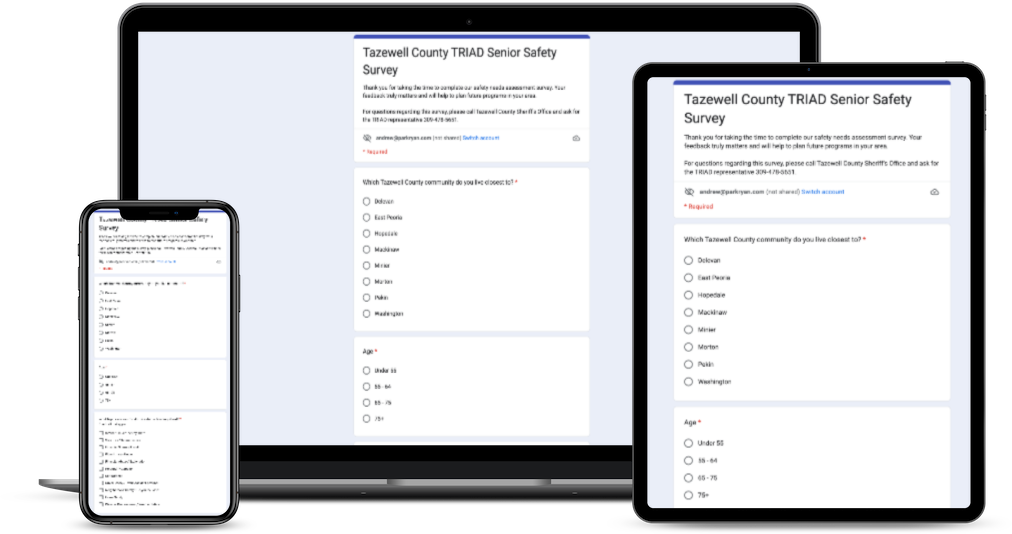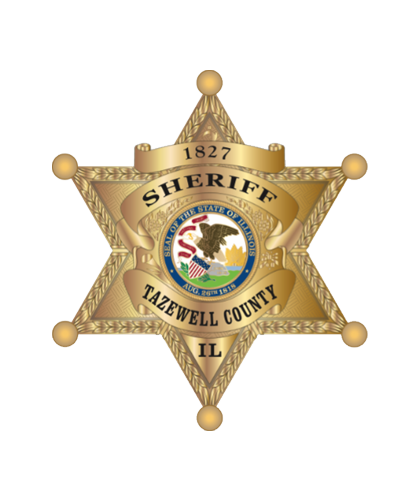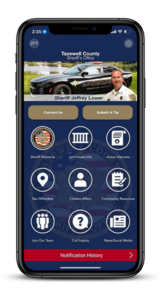Tazewell County Sheriff's Office

Tazewell County TRIAD Senior Safety Survey
All month long the Tazewell County TRIAD will be asking the community to participate in our Senior Safety Survey.
If you haven’t already, please click the button below and let us know your thoughts.
For questions regarding this survey, please call the Tazewell County Sheriff’s office and ask for the TRIAD representative 309-478-5651.
Sheriff
Jeffrey Lower
Welcome to the Tazewell County Sheriff’s Office Website. The Sheriff is the Chief Law Officer of the County and the sole Law Enforcement Official elected by the people. Many believe that the Office of the Sheriff is the main keeper of accountability between Law Enforcement and the Public. In the spirit of accountability and responsiveness, we are pleased to provide this publicly accessible site on the World Wide Web. We want you to take a look at who we are and our role in Serving and Protect.





🎉 Congratulations to Our Newest Deputy! 🎉
Please join us in congratulating Deputy Tyler Clark on his successful graduation from the Macon County Law Enforcement Training Center (MCLETC).
Deputy Clark began his career with the Sheriff’s Office as a Correctional Officer in December 2018. We are proud to see him reach this important milestone and take the next step in his law enforcement career.
Congratulations, Deputy Clark, and thank you for your continued service to our community.
#TazewellCounty #TazewellCountySheriff #IllinoisLawEnforcement #NewDeputy #MCLETC #PublicService #CommunityPride #ProudToServe ... See MoreSee Less
🎉 Plan on celebrating tonight?
Don’t drop the ball — leave that to NYC!
Have a designated sober driver or safe ride lined up so everyone makes it home safely.
🎆 Happy New Year!
#nye #NYE #NYECountdown #DriveSober #drivesober #DriveSoberOrGetPulledOver #drivesoberorgetpulledover ... See MoreSee Less
SPRINGFIELD ROAD WILL OPEN AT 11:00AM 12/29/25
12/29/25
The Tazewell County Highway Department is advising motorists that Springfield Road in rural Pekin will be open to traffic beginning at 11:00 am. ... See MoreSee Less
🚨 TRAFFIC ALERT: SPRINGFIELD ROAD CLOSED 🚨
🚨 TRAFFIC ALERT: SPRINGFIELD ROAD CLOSED 🚨
The Tazewell County Sheriff’s Office is advising motorists that Springfield Road is currently closed in both directions between Illinois Route 9 and Broadway in rural Pekin.
• Reason: Several downed electric poles.
• Duration: Repairs are extensive; the road is expected to remain closed through the night.
Please seek an alternate route and give utility crews plenty of space to work safely. ... See MoreSee Less
... See MoreSee Less
This content isn't available right now
When this happens, it's usually because the owner only shared it with a small group of people, changed who can see it or it's been deleted.... See MoreSee Less
This content isn't available right now
When this happens, it's usually because the owner only shared it with a small group of people, changed who can see it or it's been deleted.Message from the North Pole!
Local police and fire departments just received a message from the North Pole. According to Buddy the Elf, Santa and the reindeer are expected to fly into Tazewell County at 8:00 p.m. on Christmas Eve.The Jolly Old Elf made a list, and he checked it twice. He was very pleased with the good behavior of the boys and girls of Tazewell County this year.Apparently, Santa’s belt was a little tighter than normal last year when he returned to the workshop. Buddy asked for the children to only set out two cookies this Christmas, and maybe just a couple carrots for the reindeer.Buddy said the students at the North Pole Elf-ementary are out of school for the holiday, just like all of you. Though you’re taking a break from learning the Elf-abet, he wants you to remember to practice good behavior and to be kind to others.Tazewell County 911 - TC3 will receive a message just before Santa’s arrival. You can hear the dispatcher broadcast Santa’s location to local officers by listening to the scanner app "5-0 Radio Police Scanner - Tazewell County Sheriff” at 8pm. ... See MoreSee Less
The Tazewell County Sheriff’s Office would like to extend our sincere gratitude to the incredible community we are honored to serve, especially during the Holiday Season.
We would also like to give a very special thank you to Brooke and Brooke’s Love for Heroes for the thoughtful gifts and delicious cookies generously shared with our deputies. These gestures of appreciation truly lifted spirits and reminded our team how valued they are. Your kindness and support do not go unnoticed, and we are deeply grateful for all that you do to support those who serve.
Thank you for standing with us and for being such an amazing community! ... See MoreSee Less
... See MoreSee Less
This content isn't available right now
When this happens, it's usually because the owner only shared it with a small group of people, changed who can see it or it's been deleted.